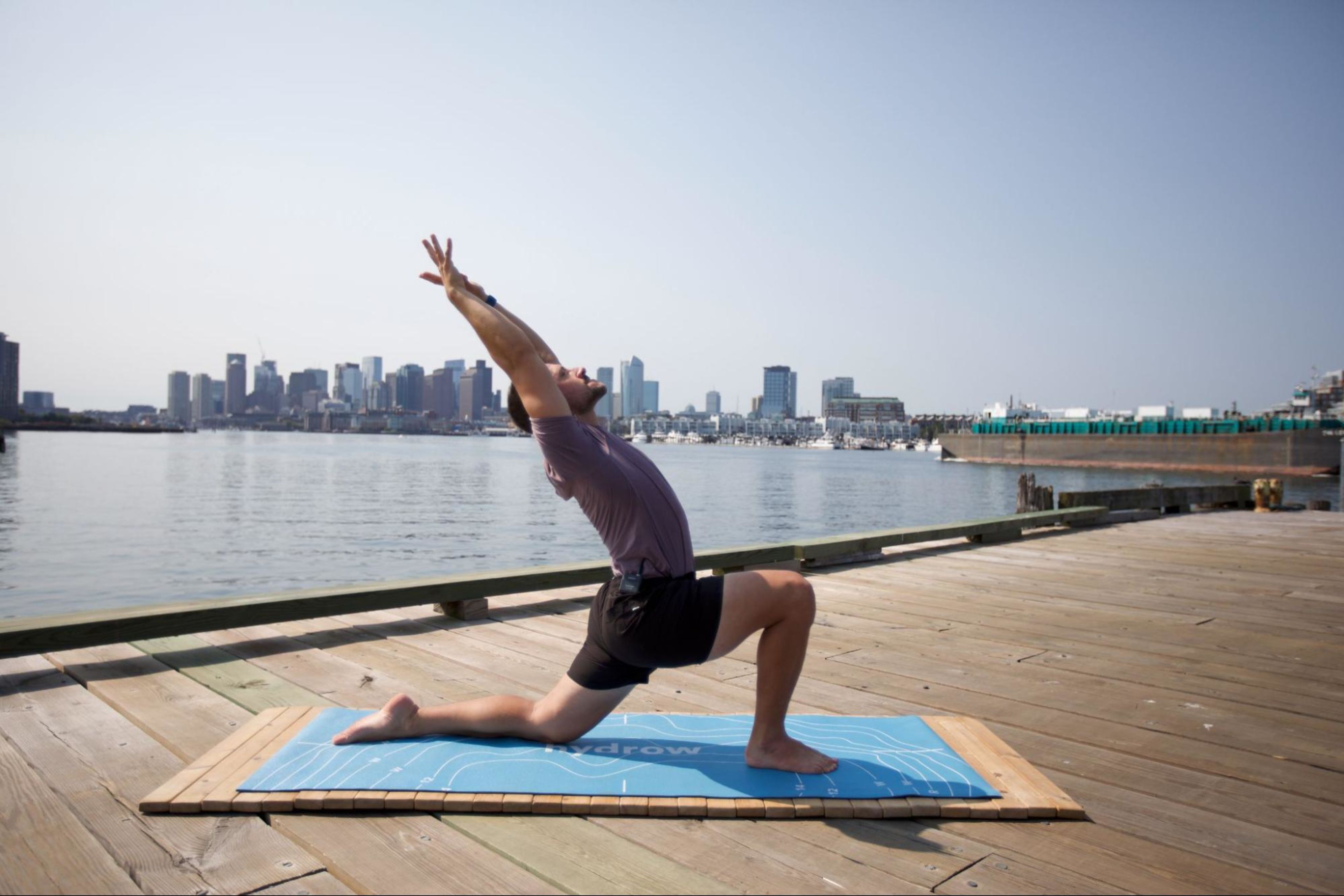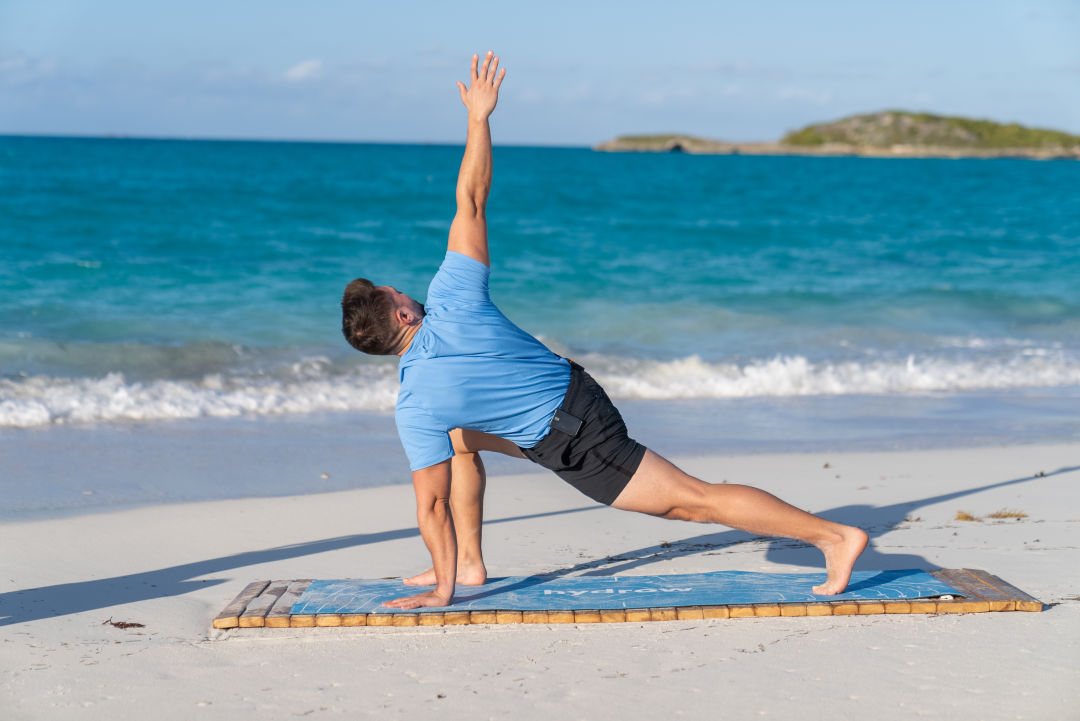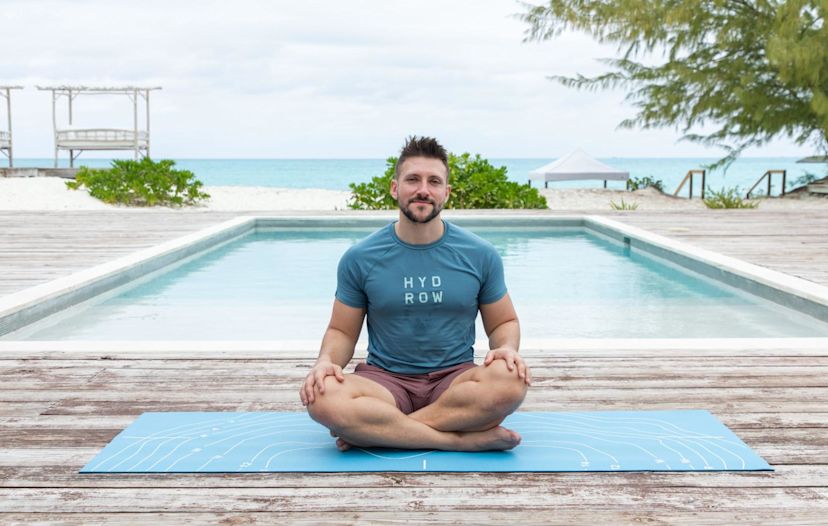Can You Do Yoga Every Day?

As a yoga teacher, I’ve seen the spark of excitement that comes from taking your first yoga class. Whether it’s the feeling of a clear mind, the impact of moving your body in new ways, or the euphoria of having left a puddle of sweat on your mat, yoga is a practice we find ourselves eager to come back to again and again.
Amid all that excitement, new students may find themselves wondering, can you do yoga every day?
In this article, we’ll cover some of the benefits from yoga practiced every day, as well as some of the downsides of practicing yoga every single day. Ultimately, this is a very individualized decision that depends on your personal goals and expectations. Let’s get into it!
The benefits of doing yoga every day
If you’re loving that yogi life, great news—there are a ton of perks of making yoga a part of your daily fitness routine, including:
It may help get you into a routine
You will see faster improvement in your technique
You may increase your mobility
You may increase your strength
Let’s explore these benefits of doing yoga every day further:
It may help get you into a routine
I’ve personally found that there’s a bit of an investment period that one has to overcome in order to practice yoga with regularity. It takes a few times before we really associate the effort of doing yoga with the benefits we feel afterward.
One sure way to build that association is to practice as often as possible, especially in the beginning. Once yoga is something you look forward to doing, the decision of whether or not to show up practically makes itself. Consistency is the most important thing in progressing your yoga practice, so if you feel motivated to practice every day, why not lean into that?
You will see faster improvement in your technique
One of the most motivating aspects of practicing yoga is the feeling of improvement you’ll find every single time you step onto your mat. Yoga is difficult for a reason; many poses take years or decades to master, and the practices of breathwork and mindfulness underlying the physical postures are a lifelong endeavor in themselves.
When you practice yoga regularly, you’ll notice small (or large!) improvements in your form in different areas. One day, you might notice you can hold a challenging balance pose for a few breaths longer, and the next day, you may notice your mind is a bit calmer during savasana.
Gaining familiarity with the poses and transitions across the different types of yoga can give you a big confidence boost. You’ll find that the mind can relax more when you’re not frantically discerning a warrior one from a warrior two pose!
Related blog: 20 Yoga Poses for Beginners and Their Benefits
You may increase your mobility
How often in your daily life do you twist or go upside down? A regular yoga practice helps you to regain ranges of motion that might otherwise be lost due to time and inactivity. By practicing yoga every day, you will counter-program the activities of daily living like sitting or texting that cause our posture to become more compressed.
Yoga is actually a wonderful counter to sitting because of its emphasis on lunging movements that open up the fronts of the hips. The simple ability to sit and stand from the floor with minimal assistance has been positively associated with living longer, and this action is thoroughly trained on the yoga mat. Every yoga practice is a deposit in the bank towards better function and movement in the body.

Explore Hydrow’s library of 5,000+ rowing, circuit training, yoga, Pilates, and mobility workouts.
You may increase your strength
Some yoga poses utilize your own body weight as resistance, which over time can improve your strength. The chaturanga push-up, for example, utilizes the chest and triceps to lower the upper body in a controlled manner towards the floor. More static poses like downward-facing dog also build strength in the upper back and arms, along with a mental and physical endurance from holding them for extended periods of time.
Since many yoga poses involve bearing weight on the hands, you will also find your wrist strength improves with consistent practice.
The downsides of doing yoga every day
While doing yoga every day can be highly beneficial, there are some drawbacks you should pay attention to as well, including:
It may increase the risk of burnout
It may increase your risk of injuries
You may not have enough variety in your fitness routine
It may increase the risk of burnout
Ask yourself if you’re the type of person who makes over-ambitious goals when it comes to health and fitness, and understand how you typically respond when you fail to meet those lofty expectations. In all likelihood, if you set yourself a goal of practicing yoga every single day, you won’t achieve it—and that’s okay! Life gets in the way, schedules get messed up, and some days just get away from you despite your best intentions.
You might find it useful to adjust your expectations so that you don’t get frustrated. That could mean dialing back your goal to practice yoga two to three times a week, or consider your daily yoga goal met even if you just take five minutes of mindful breathing while moving through cat-cow shapes and a downward-facing dog or two.
Remember, any yoga is better than no yoga at all!
It may increase your risk of injuries
Especially if you’re new to yoga or returning from a long absence, practicing yoga every day might increase your risk of injury. Throwing yourself into deep stretches and precarious positions without taking enough time for your body to sufficiently integrate and recover after a given session might not be the smartest approach.
In particular, be sure to take it easy on the wrists. It’s unlikely you’re spending much time bearing weight on your hands outside of yoga, so understand that the wrists might need some time to build up the requisite strength.
You may not have enough variety in your fitness routine
This comes down to personal goals and preferences, but it’s worth noting that for all the benefits of yoga, it is not a fitness panacea. There are a few things that yoga does not provide as part of your fitness regimen.
First, yoga is not an effective form of cardio. If you’re looking to improve your cardio, be sure to mix in activities like rowing that elevate your heart rate for an extended period of time. Second, yoga is not the most effective form of strength training. Yes, there are some postures that can build strength using your body weight as resistance, but to make real strength gains you will have to progressively overload in a way that yoga alone can’t provide.
Last, there’s a mental value to mixing things up in your fitness routine that you might lose out on if you decide to spend all of your allotted time practicing yoga.
Why it’s important to listen to your body
Fortunately, yoga is a little bit different from other types of athletic disciplines in that it actively encourages a deep listening to your own body. Between the various styles of yoga—from Vinyasa Flow to Restorative—there are a plethora of options to meet your energy level on any given day. Y
ou wouldn’t think to run a marathon or complete a full-out high-intensity interval training (HIIT) workout every day, but yoga is a bit different. Simply sitting in a comfortable seat and focusing on your breath to quiet your mind is yoga. It doesn’t always have to be a full-blown workout.
Give yourself permission to back off when you’re feeling tired with a Restorative or Yin-style yoga class, and save those more intense Flow classes for when you’re feeling more well-resourced.
A good yoga teacher will encourage students to take breaks and modify their practice so that they don’t push themselves beyond their limits. I can usually tell a more seasoned student because they exhibit that exact sort of agency and decide for themselves when to skip or modify a pose I’m offering. Always listen to your body and take what you need from the practice.
Doing yoga every day: Final thoughts
There are plenty of realistic ways in which you could fit yoga into your overall routine on a daily basis. Yoga is great as a warm-up before exercise, terrific as a cool-down after a workout, and no doubt can be an excellent workout in and of itself. It can look like some gentle movements for a few minutes, or balancing in tree pose while you brush your teeth.
You need minimal equipment to practice yoga, and there are lots of virtual classes and resources available, making it the perfect activity to perform from the comfort of your own home.
If you can’t make it to the gym or yoga studio every day, Hydrow’s yoga library offers guided workouts designed to help you build strength, improve mobility, and bring calm to your day. Explore Hydrow’s yoga workouts today.

Explore Hydrow’s library of yoga workouts from around the world.







